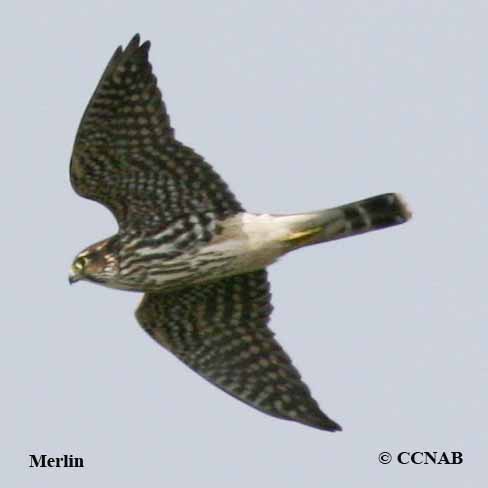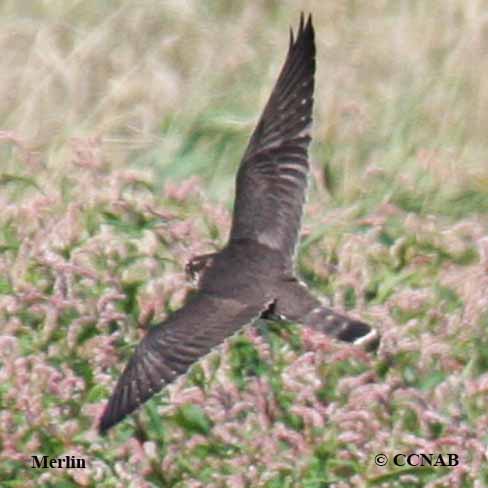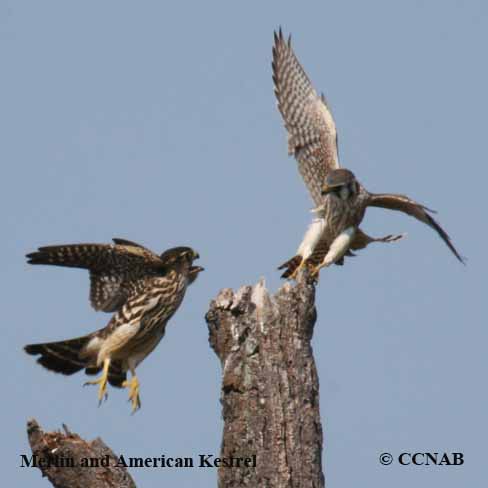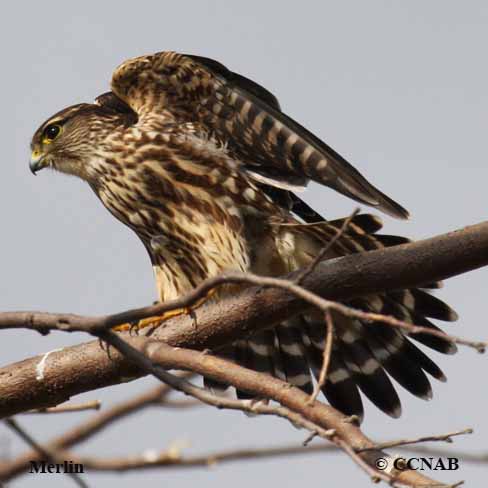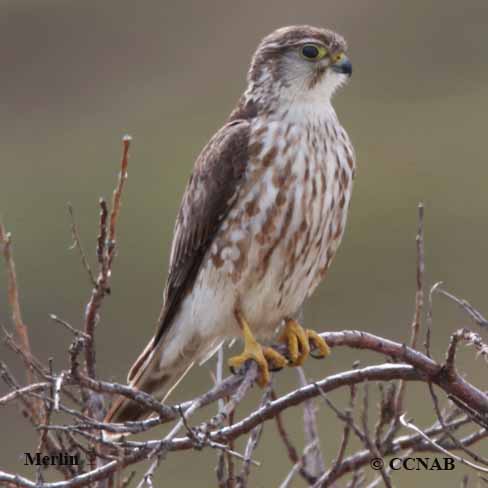North American Bird Search Box
This search box can be used to find bird species using bird's english, french or latin name, or to identify bird by its 4 letter Alpha Code
Field Guide for all the Birds of North America
Merlin
4 Letter (english names) Alpha Code: MERL (1)
Faucon émerillon
Falco columbarius
Information, images and range maps on over 1,000 birds of North America, including sub-species, vagrants, introduced birds and possibilities
Species: The Merlin (Falco columbarius), once known as the "Pigeon Hawk", feeds mostly on small birds, larger insects and some mammals. It is a member of the falcon family, identified as such, because of its double-toothed beak. It breeds in the northern regions of North America and is becoming a more common sight during the spring and fall. It is known to follow and prey on smaller birds during the migration periods.
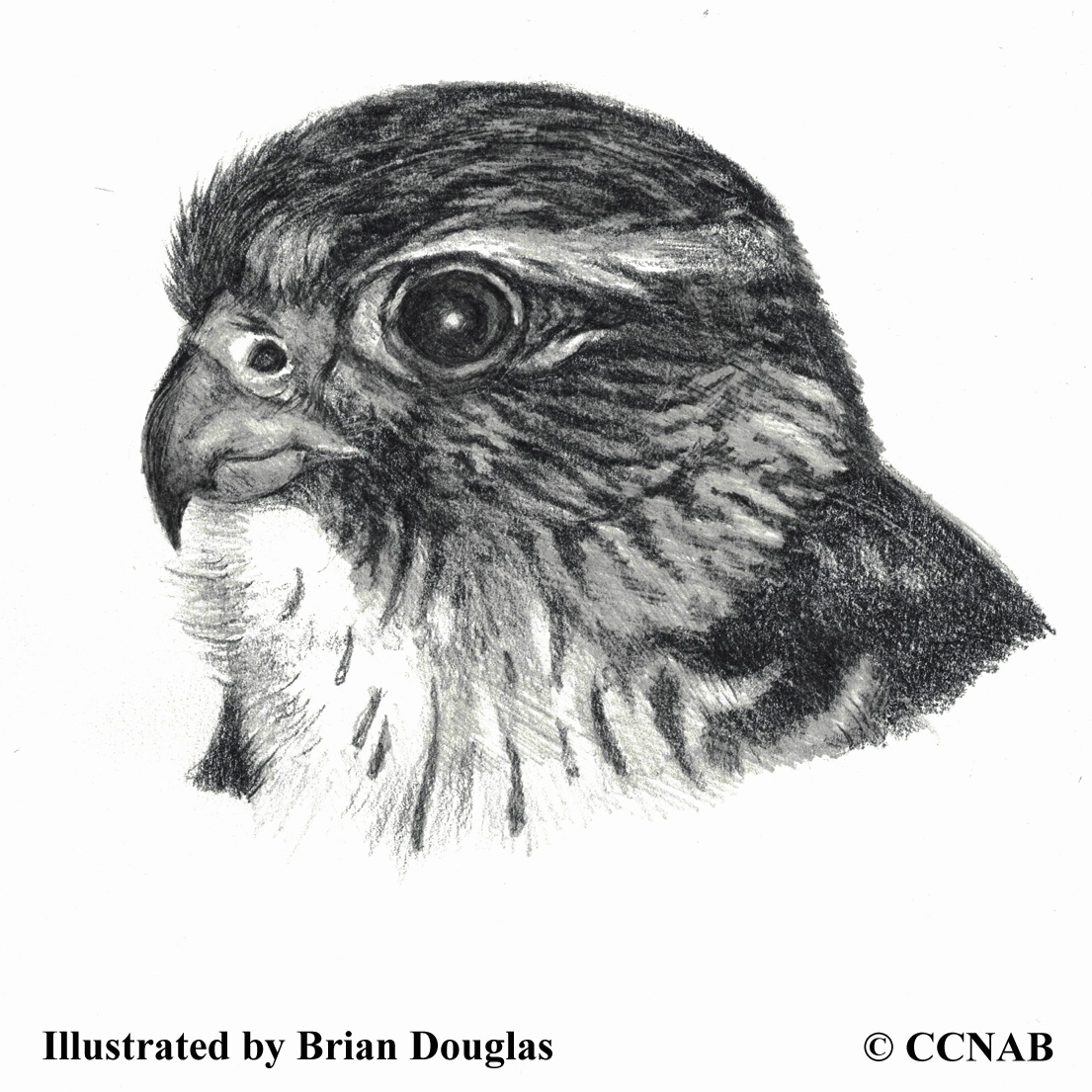
Distinctions: Sexually dimorphic, the male has a bluish-grey back, most times, a dark crown and with a slight mustache. Pointed wings displaying a checkered pattern and its' breast with brown streaking. The female is light brown and a brown back with light streaking. The juvenile is similar to the female with browner plumage and more visible streaking on the breast.
Voice: Calls are similar to other birds of prey, sharp repeated cries which are often heard when flying.
Nesting: Four to five pale eggs and brown spotted. Will use cavities in trees or even abandoned nests left by other large birds, to raise its young.
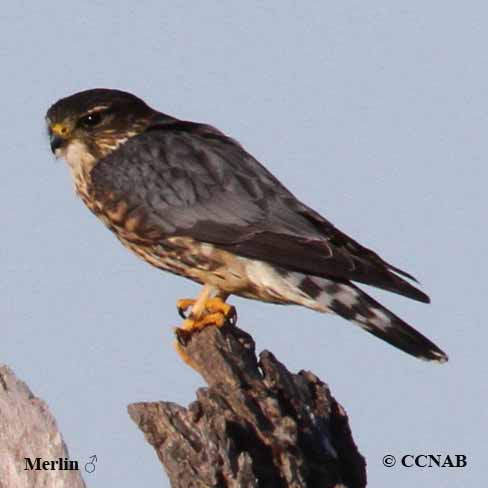
Life, Habitat and Pictures of North American Falcons
| B L | W W | W | Family | Latin Name |
|---|---|---|---|---|
| 10" 25.40cm | 24" 61cm | 6.5oz. 184.25g | Falconidae | Falco columbarius |
North American Birds Videos
- Click here
- Click here - Juvenile calling
- Click here
North American Bird Calls
- Click here
- Summer
- Year Around
- Winter
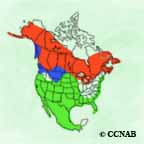
Distribution: Spends the summer months throughout the taiga regions of Canada and the USA. Spends the winter months throughout central and western USA and into Mexico and traveling as far as South America. It is seen from Newfoundland and Labrador to western Alaska and southern California, throughout the central USA, along the Gulf of Mexico to the tip of Florida and up along the Atlantic coast.
References to Other Bird Sites:
ABA - American Birding Association This site represents an organization that maintains official records of all birds species that have been proven to have been seen inside the perimeters of the North American Continent and the surrounding bodies of water. Regular revised versions are posted to keep the bird list current at all times. This is the list used by all serious birders over their lifetime. You may be aware of the movie called the "Big Year". It was with this list that all the competing birders used in an attempt to set a new record as to how many bird species that could be seen by an individual birder in one calendar year.
